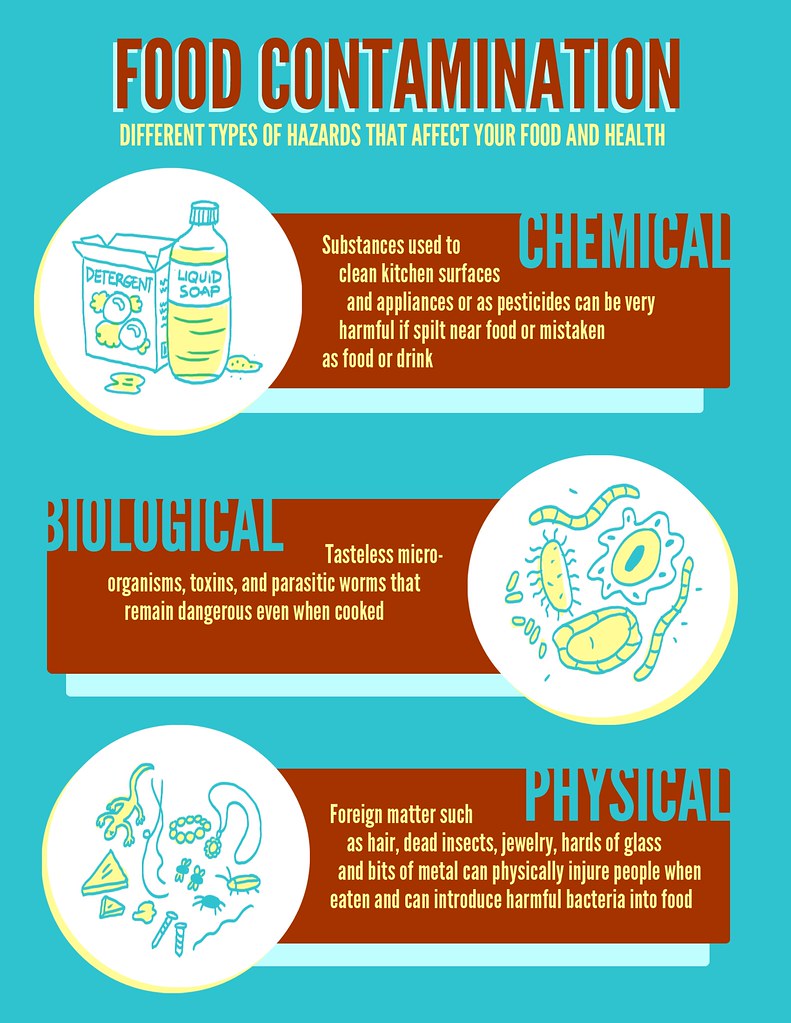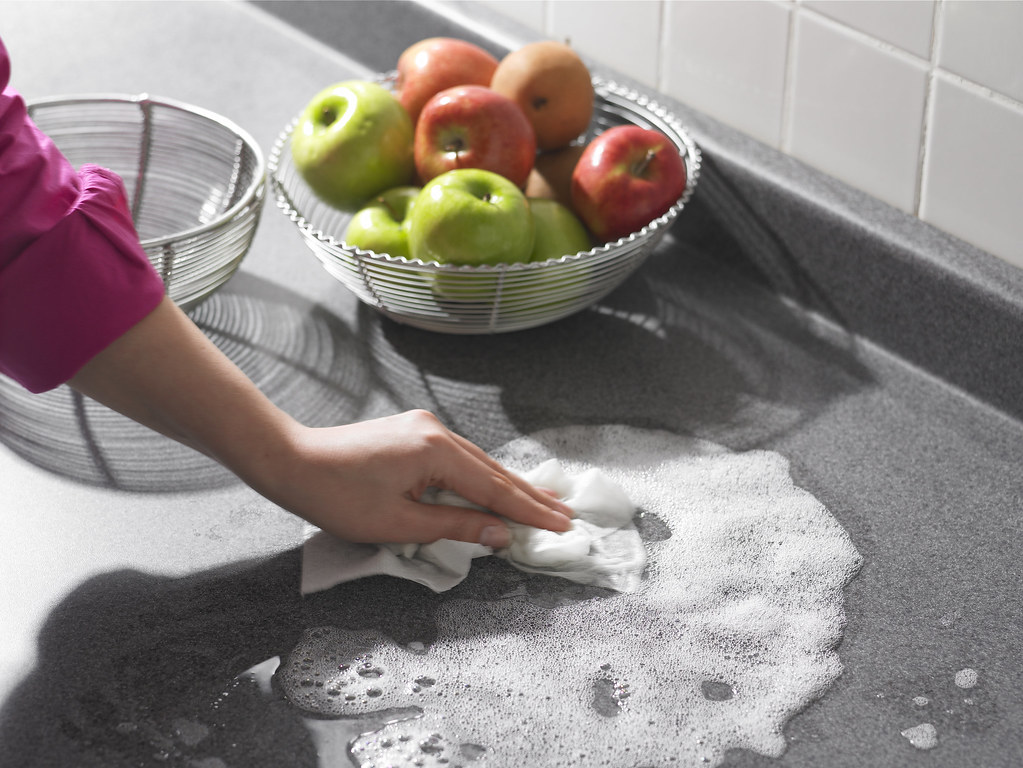Difference Between Contamination and Cross-contamination
Cases of food poisoning have become rampant. Most prevalent in fruits and vegetable, the use of insecticides and pesticides have led to a drastic increase in the number of health problems. Other than pesticides and insecticides, other scenarios that may cause food-contamination illnesses includes unhygienic conditions handling of food, contamination with toxins in the process of handling, chemical contamination as well as physical contamination. Although contamination and cross-contamination are sometimes used synonymously, the two have differences.

What is Contamination?
This is the improper handling of raw or cooked food resulting in disease-causing organisms such as parasites, bacteria and viruses. These organisms produce toxins that in turn lead to food intoxication. Other factors that could lead to contamination include improper handling, storage and preparing of food, improper sanitization and cleaning, contamination of pests and insects such as cockroaches and flies.
There are different types of food contamination. These include:
- Chemical contamination- This is caused by the use of pesticides, non-safe plastic food containers, kitchen cleaning agents in fruits, food and vegetables. It is one of the most common causes of serious cases of food contamination.
- Biological contamination- This is the contamination of food products by other living organisms such as harmful bacteria. It is the major cause of food spoilage and if consumed may lead to food poisoning. While bacteria are found anywhere, the most common places where bacteria thrive include raw meat, pests, pets, kitchen counters and clothes, sinks, dust and the air.
- Physical contamination- This is the contamination of food items with physical contaminants such as broken metals or glass, jewelry, hair and even dirt.
Contamination can be avoided by:
- Proper handling of food including preparation and storage
- Proper cleaning and sanitizing of utensils
- Covering food to avoid contamination by insects

What is Cross-contamination?
This is the unintentional transfer of chemical contaminants, microorganisms or other foreign substances from people, food products or objects. Cross-contamination mostly occurs between products that contain allergens to allergen-free products or raw foods to ready-to-eat foods.
Cross-contamination of foods occurs when raw food that contains harmful bacteria comes into contact with other food products. For instance, food can be contaminated when raw meat releases pathogens during storage or when raw products are transferred using broken cartons or leaky boxed.
It can also occur when allergen-free products are placed on surfaces or equipment containing allergens. Allergens can also be transferred through workers who do not follow Good Manufacturing Practices. For instance, the use of soiled uniform or contaminated work gear not to mention the failure to follow prescribed food handling procedures.
Cross-contamination can be avoided by:
- Observing hygiene when handling food products
- Storing raw food and ready to eat foods separate
- Ensure companies and businesses have measures set up to minimize the likelihood of cross-contamination
- Ensure employees are trained to identify and prevent potential cross-contamination situations
Similarities between Contamination and Cross-contamination
- Both can lead to food poisoning
Differences between Contamination and Cross-contamination
Definition
Contamination refers to the improper handling of raw or cooked food resulting in disease-causing organisms such as parasites, bacteria and viruses. On the other hand, cross-contamination refers to the unintentional transfer of chemical contaminants, microorganisms or other foreign substances from people, food products or objects.
Causes
Contamination is caused by improper handling, storage and preparing of food, improper sanitization and cleaning, contamination pests and insects. On the other hand, cross-contamination occurs when products that contain allergens to allergen-free products or raw foods to ready-to-eat foods.
Preventive measures
While contamination can be prevented by proper handling of food including preparation and storage, proper cleaning and sanitizing of utensils and covering food to avoid contamination by insects, cross-contamination can be avoided by observing hygiene when handling food products, storing raw food and ready to eat foods separate, ensuring companies and businesses have measures set up to minimize the likelihood of cross-contamination and ensuring employees are trained to identify and prevent potential cross-contamination situations.
Contamination vs. Cross-contamination: Comparison Table

Summary of Contamination vs. Cross-contamination
Contamination refers to the improper handling of raw or cooked food resulting in disease-causing organisms such as parasites, bacteria and viruses. It is caused by improper handling, storage and preparing of food, improper sanitization and cleaning, contamination pests and insects. On the other hand, cross-contamination refers to the unintentional transfer of chemical contaminants, microorganisms or other foreign substances from people, food products or objects. It occurs when products that contain allergens to allergen-free products or raw foods to ready-to-eat foods.
Although everyone is at risk of getting food poisoning, the most vulnerable are children below 5 years, pregnant women, elderly people and people with weak immune systems. People should hence observe provided guidelines to prevent contamination and cross-contamination.
- Difference Between Profit Center and Investment Center - July 2, 2022
- Difference Between Anti-Trust and Anti-Competition - June 6, 2022
- Difference Between Stocktaking and Stock Control - June 6, 2022
Search DifferenceBetween.net :
Leave a Response
References :
[0]Fereday M & Hadley K. Ensuring Competent Performance in Forensic Practice: Recovery, Analysis, Interpretation, and Reporting. CRC Press Publishers, 2007. https://books.google.co.ke/books?id=0wJMUuEwvx4C&pg=PA65&dq=Difference+between+contamination+and+cross+contamination&hl=en&sa=X&ved=2ahUKEwjBn4rIu_fqAhXwSBUIHV7QAKsQ6AEwAnoECAYQAg#v=onepage&q=Difference%20between%20contamination%20and%20cross%20contamination&f=false
[1]John O & Rees D. Crop Post-Harvest: Science and Technology, Volume 3: Perishables. John Wiley & Sons Publishers, 2012. https://books.google.co.ke/books?id=vbvcEVT_vOAC&pg=PA77&dq=Difference+between+contamination+and+cross+contamination&hl=en&sa=X&ved=2ahUKEwjBn4rIu_fqAhXwSBUIHV7QAKsQ6AEwCXoECAEQAg#v=onepage&q=Difference%20between%20contamination%20and%20cross%20contamination&f=false
[2]Susanne Hummel. Ancient DNA Typing: Methods, Strategies and Applications. Springer Science & Business Media, 2003. https://books.google.co.ke/books?id=3PcfPmmm1N0C&pg=PA133&dq=Difference+between+contamination+and+cross+contamination&hl=en&sa=X&ved=2ahUKEwjBn4rIu_fqAhXwSBUIHV7QAKsQ6AEwBnoECAkQAg#v=onepage&q=Difference%20between%20contamination%20and%20cross%20contamination&f=false
[3]Image credit: https://live.staticflickr.com/7269/6862196714_85c539df7c_b.jpg
[4]Image credit: https://live.staticflickr.com/7206/6861307773_2971edb2ce_b.jpg
